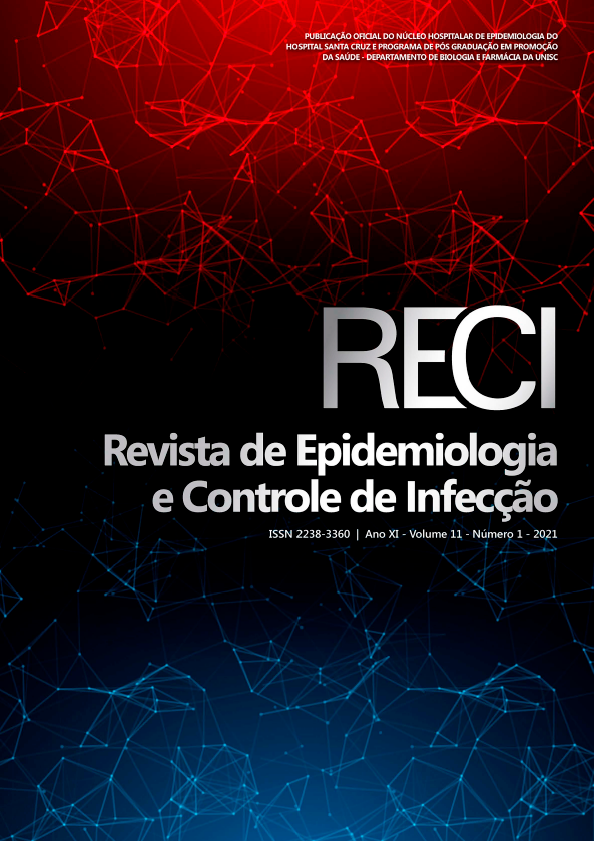Systematic review of temporal trends of congenital syphilis in Brazil
DOI:
https://doi.org/10.17058/reci.v1i1.15151Palavras-chave:
Syphilis, Congenital, Time Series Studies, Review, BrazilResumo
The present study was aimed to retrieve and analyse the temporal trends of congenital syphilis (CS) in Brazil, as well as to list its main associated factors. Methods: In August 2019 a systematic review was developed in four electronic databases (Lilacs, Pubmed, Scielo and Web of Science) and in manual searches on reference lists. It was established that the synthesis of this review would be composed by ecological studies with CS temporal trends in the Brazilian territory, regardless of the population characteristics and data representativeness. More specifically, it was also established that the prevalence of CS of the first and last year of the time series would be presented in the descriptive synthesis. Results: Of the 2,157 initial studies, 14 adequately met the inclusion criteria and composed the synthesis. Twelve (85.7%) of these studies showed increases in time trends, with particular emphasis on the two nationwide studies, which showed positive trends between 2003–2008 (0.4) and 2010–2015 (3.7). Associations were found between CS and socioeconomic and ethnic factors, especially in the groups of women with low income, low education, brown / black skin colour and who had untreated partners. Conclusion: most of the available research showed an increase in the temporal trends of CS, highlighting that these data were observed at the national, state and municipal levels. Since mothers' socioeconomic and ethnic factors are associated with higher CS frequencies, efforts are needed to increase the coverage of the Unified Health System to vulnerable women.Downloads
Downloads
Publicado
Como Citar
Edição
Seção
Licença
Copyright (c) 2021 Maicon Madureira, Paulo Henrique de Araújo Guerra, Charles Junior Finco, Thais Nascimento Helou, Paulo Roberto Barbato

Este trabalho está licenciado sob uma licença Creative Commons Attribution 4.0 International License.
The author must state that the paper is original (has not been published previously), not infringing any copyright or other ownership right involving third parties. Once the paper is submitted, the Journal reserves the right to make normative changes, such as spelling and grammar, in order to maintain the language standard, but respecting the author’s style. The published papers become ownership of RECI, considering that all the opinions expressed by the authors are their responsibility. Because we are an open access journal, we allow free use of articles in educational and scientific applications provided the source is cited under the Creative Commons CC-BY license.


